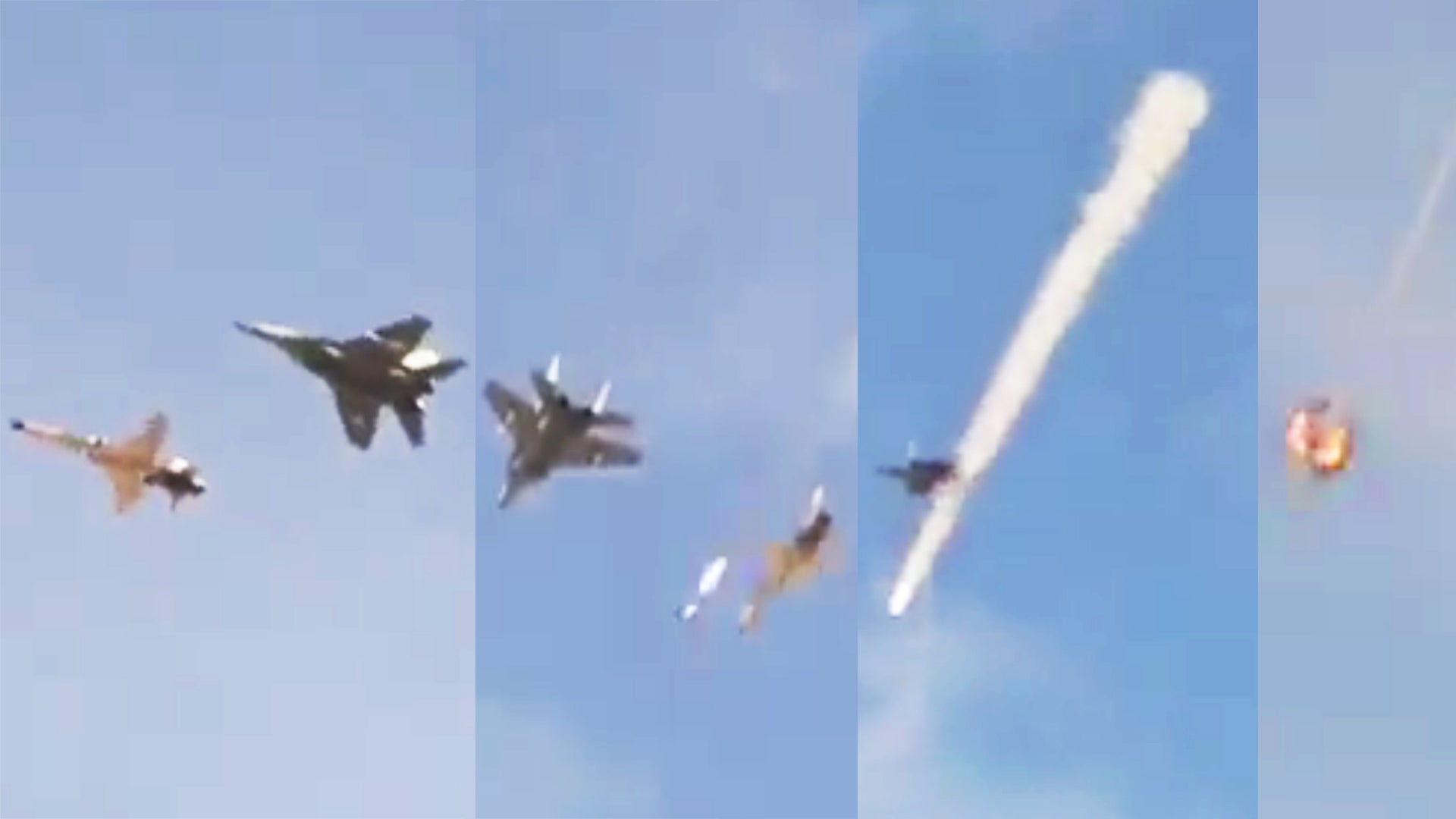Engaging different kinds of aerial targets at short range with heat-seeking missiles is part of the bread and butter for every fighter pilot. It’s not so often, however, that we get a chance to see that process being put to the test, end to end, in a live-fire environment. Now, video has emerged showing one of the world’s more secretive air forces doing just that, with an Iranian fighter launching an infrared-guided missile at a target at very close quarters and at an impressively low level.
The video in question, brought to our attention by Twitter user @AmirIGM, is undated but shows very clearly an Islamic Republic of Iran Air Force, or IRIAF, MiG-29 Fulcrum fighter jet taking part in a live-fire air-to-air missile drill alongside an F-5 Tiger II jet — apparently a two-seat F-5F model — from the same service.
The MiG-29 and the F-5 begin by flying in fingertip formation, with the Fulcrum tucked in behind the American-made fighter’s left wing. As the MiG pulls level with the F-5, the latter launches an aerial target, which then streaks ahead of the Fulcrum. The F-5 pulls away to the right and moments later, the MiG launches a single missile from under its right wing. Leaving a prominent smoke trail behind it, the missile then homes in on the target and detonates. The time between the missile coming off the rail and the explosion is no more than around four seconds.
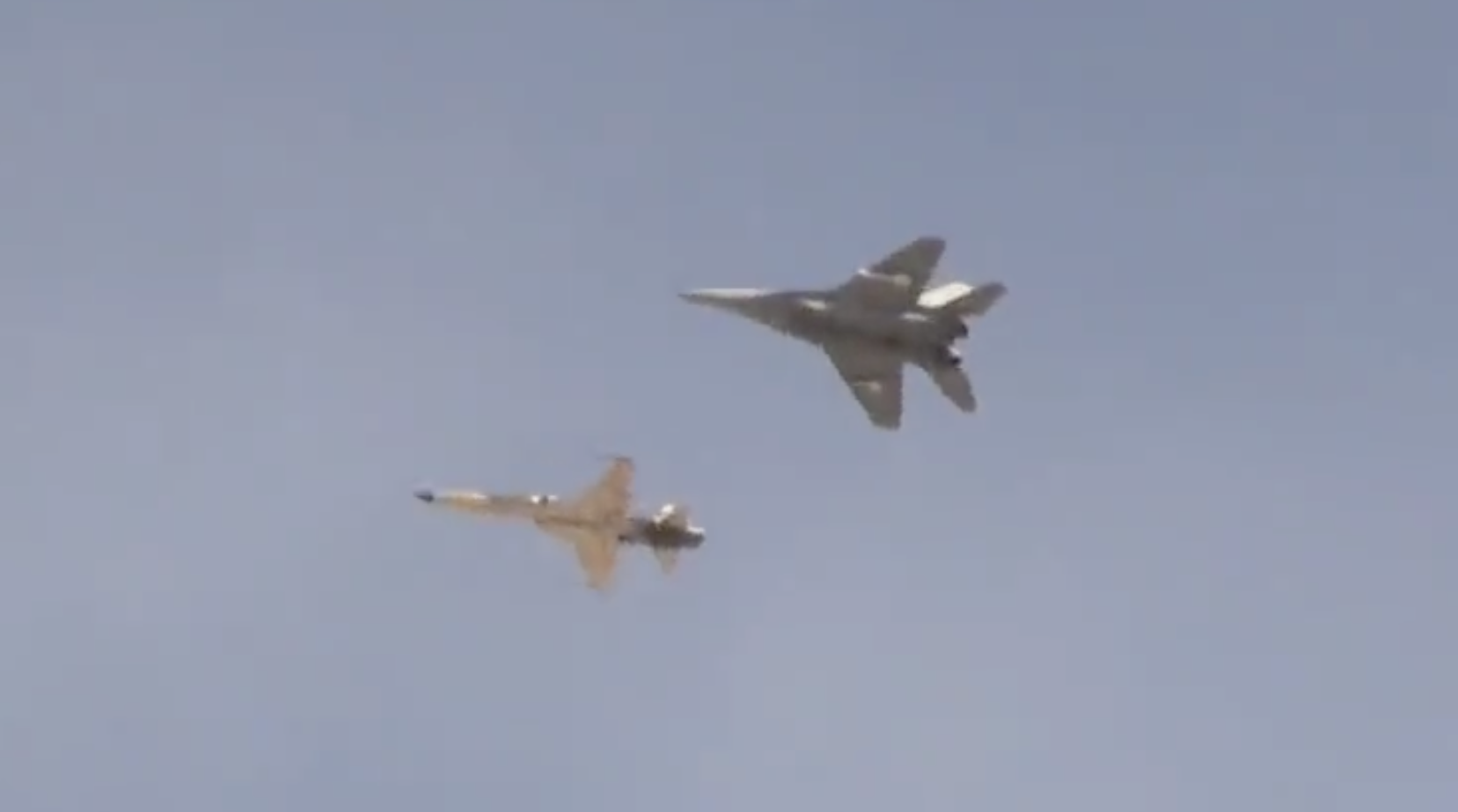
What we see fired by the MiG-29 is very clearly a Vympel R-73 heat-seeking air-to-air missile, a popular and widely used Soviet-designed weapon that’s known in the West as the AA-11 Archer. It has been in use in 1984 but remains a generally well-regarded weapon, due to its high levels of maneuverability and the fact it can be designated via the pilot’s helmet-mounted sight, as well as by the aircraft’s radar or infrared search and track (IRST) sensor.

While only a rough estimate, this engagement would appear to be very much at the lower limit of the R-73’s envelope, the missile’s single-stage rocket motor burning between four and seven seconds, with the maximum time of the controlled flight being 23 seconds.
The maximum range of the R-73 is around 19 miles for a head-on target, reducing to around 9 miles for a tail-on engagement. Against a close-range tail-on target, as here, the minimum launch distance is also a factor, and the R-73 can be launched from less than 1,000 feet.
As for what’s being shot down here, that’s less obvious, but it’s apparently a rocket target, rather than the more commonly seen towed target that’s deployed from another aircraft via a reel of cable, or free-flying target launched from the ground or even from a drone. Another Twitter user, @maysam21901, identifies the store as a TDU-11 thermal target, a Cold War-era U.S.-designed device that is based on the popular Zuni unguided rocket. For its target role, it has an additional flare to boost its infrared signature. As the same source points out, it’s compatible with an AIM-9 Sidewinder launch rail, and that seems to be what’s happening here. However, since it flies fairly straight and level, the TDU-11 is not necessarily a particularly challenging target, especially for a missile like the R-73 that can engage targets maneuvering at up to 12G.
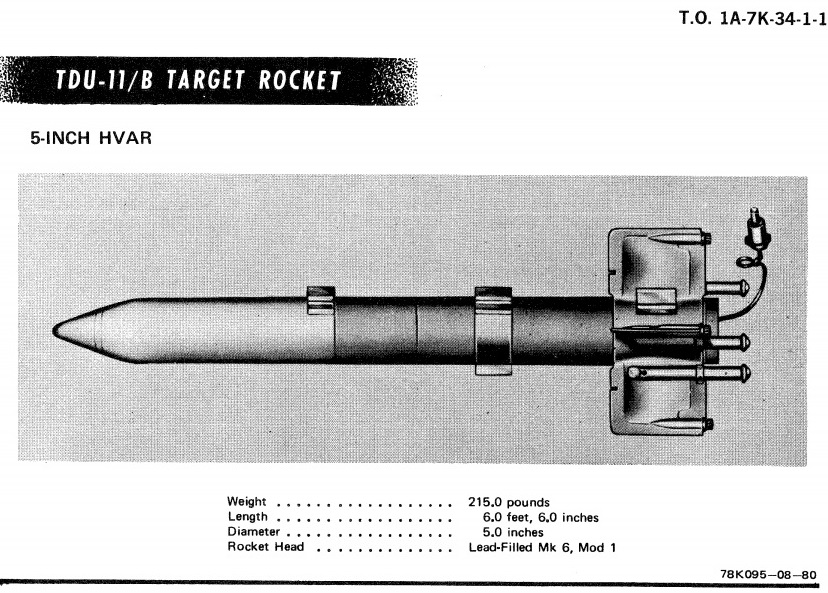
It’s not clear if this live-fire drill was part of a larger exercise or if it was even intended for public consumption, possibly during one of Iran’s regular wargames. Perhaps it was both an exercise and a display, especially bearing in mind it took place at such a low level, and apparently over members of the public; regardless, the video provides us with relatively rare imagery of one of Iran’s foremost air-defense fighters in action.
The IRIAF MiG-29s, while old, represent a relatively potent capability for an air force that has been seriously hamstrung by sanctions imposed in response to its nuclear program, which has prevented the acquisition of any new fighter equipment for many years.
The first batch of 18 MiG-29s was acquired from the then Soviet Union and began to be delivered to Iran in June 1990. Four additional MiG-29s were evacuated to Iran from Iraq in 1991, during Operation Desert Storm.
The importance assigned to the Iranian MiG-29s is reflected in their role of air defense for the Iranian capital, Tehran, as well as escorting VIP aircraft. A demonstration of the capabilities of the Fulcrum and its primary short-range missile armament is important to ensure that this important part of Iran’s air-defense network still functions as advertised.
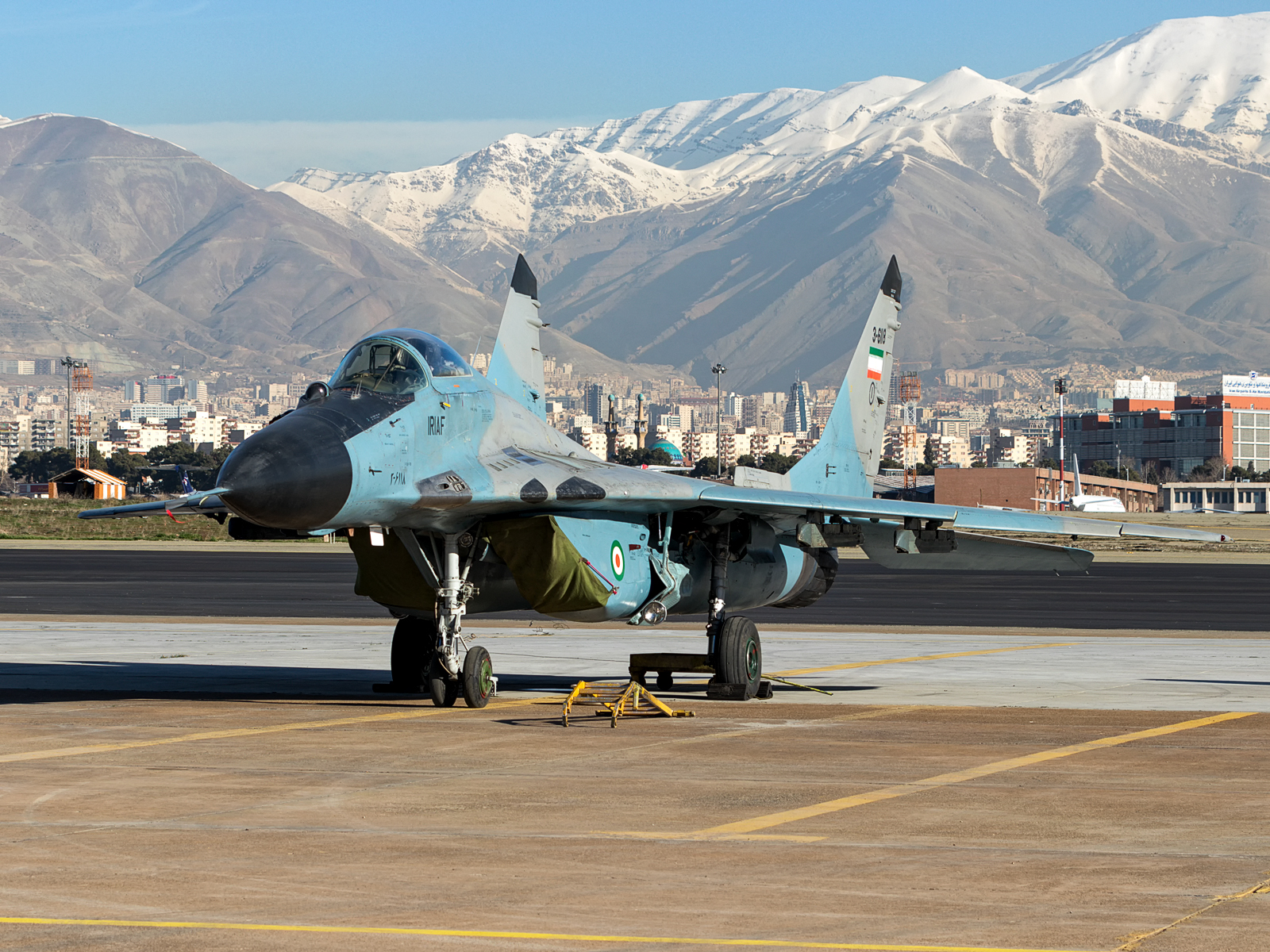
A live-fire exercise of this type, while hardly reflective of most air combat scenarios, provides valuable training to pilots and ground crew alike, with a rare chance to gain real-world experience of the end-to-end use of an infrared-guided missile.
In particular, it’s noteworthy that the R-73 seen here is apparently not a special training missile but a live version, with a warhead as well as the usual motor and infrared guidance package, evidenced by the fairly massive fireball left on the target as the MiG peels away. The Archer has a rod-type warhead that includes a little over five pounds of high explosive.
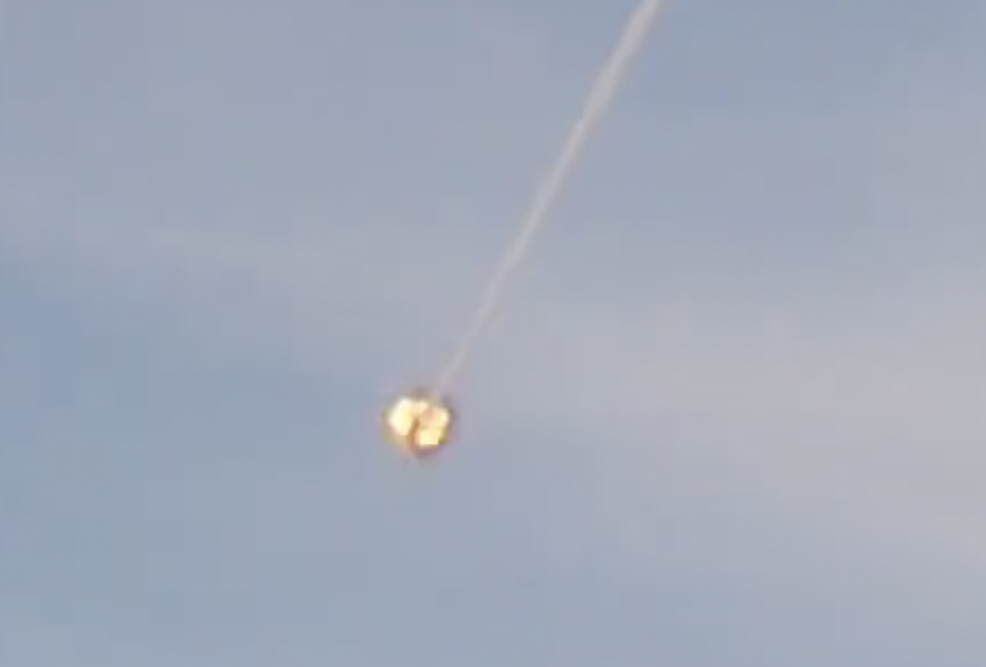
In this way, the pilot of the Fulcrum would have been provided with a level of realism impossible to replicate in a simulator, or with fully inert weapons which don’t launch off the rail and complete the engagement.
Video of R-73 missiles fired from Russian MiG-31s during a training exercise:

In this previous piece, you can read about how live-fire drills help to ensure both missiles and weapon systems work properly. But for Iran in particular, testing live missiles in this way has an added importance, since stocks of these weapons are now decades old and each missile only has a finite lifespan. The challenges this situation poses have been met head-on by the IRIAF in some intriguing ways, such as converting MIM-23 surface-to-air missiles as air-to-air weapons for the F-14, although the success of this and similar projects have been limited.
With that in mind, tried and tested solutions like the MiG-29 and R-73, despite their advancing age, remain an important part of Iran’s ability to defend its skies, at least until any kind of new fighter equipment can be procured.
Update, October 28: Kash Ryan, a close observer of the Islamic Republic of Iran Air Force has provided some further information on this type of live-fire demonstration, pointing out that the same combination of aircraft and missiles has performed similarly over Iran on at least one previous occasion. In 2019, the semi-official Tasnim news outlet reported that a “MiG-29 successfully intercepted and destroyed the missile fired from the F-5 aircraft by firing R-73 optimized missiles.” A photo released at the time confirmed a two-seat MiG-29UB was involved.
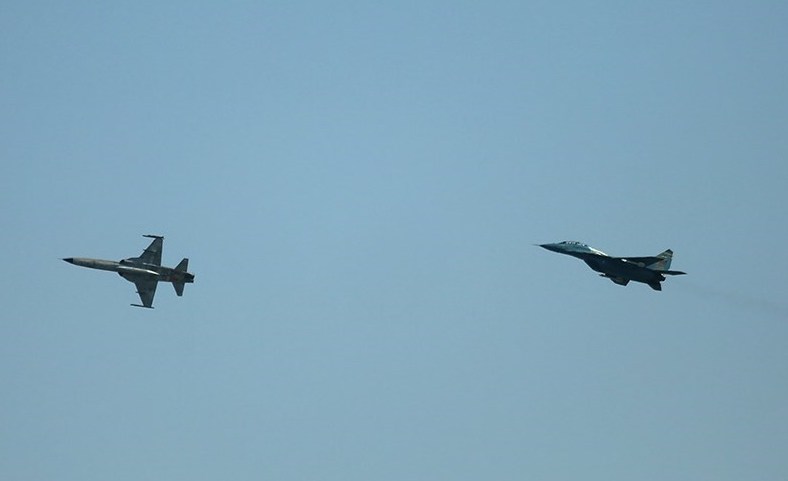
Another image, this time provided by the semi-official Mehr news agency, provides a much better of the target rocket being fired by the F-5, during the same 2019 exercise:
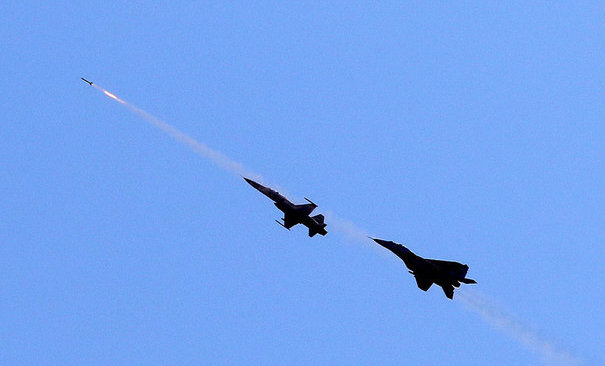
Contact the author: thomas@thedrive.com
